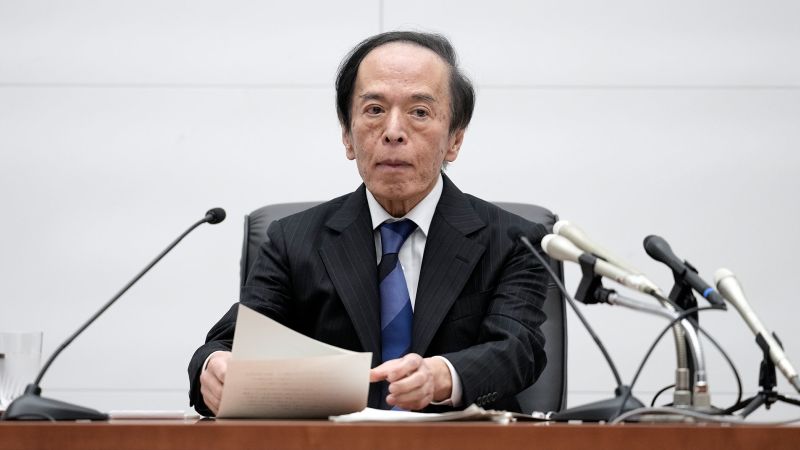The ongoing trade conflict instigated by former President Donald Trump has significant repercussions on global economic dynamics, as highlighted by Japan’s recent decision to sharply revise its economic growth forecasts. This decision was made public by the Bank of Japan, which has projected a conspicuously low growth rate of 0.5% for the year 2025, a stark reduction from the previously estimated 1.1%. Such downgrades not only reflect internal economic conditions but also underscore the ripple effects triggered by international trade policies.
The Bank of Japan released this information on a Thursday, offering further insights into its observations about the economy. In addition to the concerning 2025 forecast, next year’s growth estimate has also been adjusted from 1.0% to a meager 0.7%. This is particularly alarming as economic growth is central to job creation and overall national prosperity. The central bank attributed this moderation in growth to the repercussions of trade disputes and various policies that have prompted a slowdown in economic activities overseas, which subsequently result in diminished corporate profits domestically.
In its statement, the bank explicitly noted that the volatile trade war, characterized by an “on-again, off-again” nature, has created a murky outlook for Japan. They expressed deep uncertainty regarding how trade relationships and policies might evolve and what implications such changes could have on global economic activity and price levels. This uncertainty is reflected in the cautious economic landscape that Japan now faces.
Interestingly, Japan finds itself at the forefront in negotiations with the Trump administration for a new trade deal, a position that adds another layer of complexity to its economic outlook. During a recent event hosted by NewsNation, Trump asserted that he has reached “potential” trade agreements with Japan, as well as with South Korea and India. However, the specifics of these agreements remain elusive, raising questions about their impact and implementation.
Despite his claims of reaching potential agreements, Trump exhibited a nonchalant attitude towards the urgency of solidifying these deals, stating, “They want us. We don’t need them.” This stance seems counterintuitive given Japan’s status as a significant trade partner for the U.S. and the complexities surrounding international trade negotiations, especially in a fraught economic climate. The path to a comprehensive and mutually beneficial agreement between two allied nations tends to be long and intricate, making it improbable for any substantial arrangement to materialize swiftly.
Moreover, as a backdrop to Japan’s updated economic forecasts, the recent trends reported by the U.S. Commerce Department have indicated that the trade war has inflicted tangible harm on America’s economic fabric, leading to a slight contraction in GDP during the first quarter of the year. With consumer spending diminishing and businesses hoarding imported goods in anticipation of impending tariffs, the resulting imbalance between imports and exports has had pronounced effects on the overall economy.
On the global stage, China has also begun to feel the aftershocks of the trade tension. Reports from the country indicated a significant contraction in factory activity, which occurred at the steepest rate in 16 months, largely attributed to American tariffs imposed on Chinese goods and subsequent retaliatory tariffs from Beijing on U.S. imports. This mutual escalation underscores the widespread impact of the trade war and highlights the interconnected nature of the world economy.
The situation has drawn attention from the International Monetary Fund, which recently cautioned that the ongoing global trade war is poised to stifle growth, particularly in the United States. This warning signals that the ramifications of trade disputes can extend beyond national borders, foreshadowing potential downturns in economic health on a global scale. In summary, as the trade war evolves, its implications continue to shape economic forecasts and conditions not just in Japan and the U.S., but across the world.



